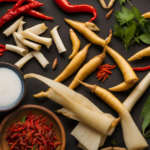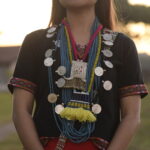Discovering Meghalaya: A Land of Lush Hills, Rich Traditions, and Unique Cuisine
Nestled in the northeastern part of India, Meghalaya is a state renowned for its breathtaking landscapes, vibrant culture, and diverse communities. Translating to “Abode of Clouds” in Sanskrit, Meghalaya lives up to its name with mist-covered hills, dense forests, and cascading waterfalls that enchant visitors from around the world.
Landscape and Environment
Meghalaya is characterized by its undulating hills, often shrouded in mist that lends an ethereal beauty to the surroundings. The state is part of the Garo-Khasi-Jaintia Hills, with elevations varying from 150 meters to over 1,900 meters above sea level. The region receives copious rainfall, making it one of the wettest places on Earth and fostering a lush, green environment. The Cherrapunji and Mawsynram areas hold world records for the highest annual rainfall, attracting both researchers and nature enthusiasts.
People and Culture
The population of Meghalaya primarily consists of three indigenous tribes: the Khasis, Garos, and Jaintias, each with its distinct cultural practices and traditions.
- Khasis: Known for their matrilineal society, the Khasis have a rich oral tradition that includes myths, legends, and folk tales. Their traditional attire includes Jainsem, a sleeveless dress worn by women, often adorned with intricate motifs and patterns.
- Garos: Renowned for their vibrant music and dance, the Garos traditionally wear Doksas (loin cloths) for men and Dakmandas (wraparound skirts) for women. The attire is complemented by distinctive jewelry made from beads, brass, and silver, showcasing their craftsmanship and cultural pride.
- Jaintias: Inhabiting the eastern part of the state, the Jaintias are skilled craftsmen known for their intricate cane and bamboo work. Their traditional attire includes Ryndia, a hand-woven silk attire worn during special occasions.
Traditions and Festivals
Meghalaya celebrates a myriad of festivals that reflect its cultural diversity and rich heritage.
- The Nongkrem Dance festival, held by the Khasi tribe in November, is a thanksgiving ceremony to the goddess Ka Blei Synshar for a bountiful harvest.
- The Wangala Festival of the Garos is a post-harvest celebration marked by rhythmic drum beats, traditional dances, and vibrant attire.
These festivals not only showcase the cultural vibrancy of the tribes but also offer visitors a glimpse into the spiritual and communal life of the people.
Unique Food Culture
The cuisine of Meghalaya is as diverse as its landscape, offering a blend of flavors influenced by indigenous ingredients and cooking techniques.
- Jadoh: A dish of rice cooked with pork or chicken and flavored with ginger, garlic, and local spices, is a staple among the Khasi community.
- Pork with bamboo shoot: Another popular delicacy, prepared by fermenting bamboo shoots with pork and local herbs.
- Kappa: A traditional Garo dish made from fermented rice paste, wrapped in leaves and smoked to enhance flavor. Kappa is a unique culinary experience that reflects the Garo people’s ingenuity in preserving and enhancing natural flavors.
For vegetarians, dishes like Tungrymbai, made from fermented soybeans, and Pumaloi, a simple rice cake, showcase the variety and richness of local flavors.
Conclusion
Meghalaya stands out not only for its natural beauty but also for its vibrant cultural tapestry and unique culinary traditions. Whether you are exploring the misty hills, participating in traditional festivals, or savouring local delicacies like Kappa, this enchanting state offers a glimpse into a world where nature and culture coexist harmoniously. For travellers seeking an authentic and immersive experience, Meghalaya promises memories that linger long after the journey ends.
3.5


